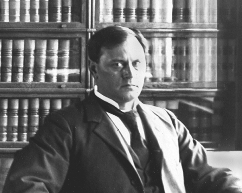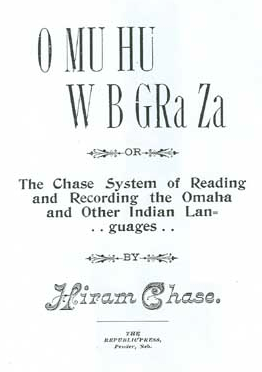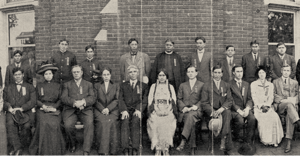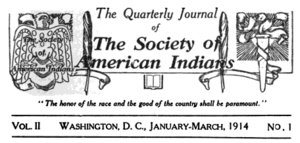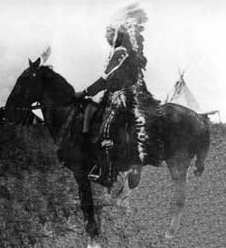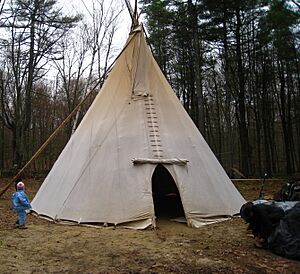Hiram Chase facts for kids
Hiram Chase (born September 9, 1861 – died December 3, 1928) was a very important Native American lawyer. He was one of the first Native American lawyers to argue a case in front of the U.S. Supreme Court, which is the highest court in the United States.
Hiram Chase also started the first law firm in the U.S. with another Native American lawyer, Thomas L. Sloan. He was a leader in the Society of American Indians. This was the first national group for Native American rights that was run by and for Native Americans themselves. This group helped create the idea of "Pan-Indianism," which means working together and uniting all Native American tribes.
Contents
Hiram Chase's Early Life and Education
Hiram Chase was born on September 9, 1861, on the Omaha Reservation in Macy, Nebraska. His great-grandfather was a leader of the Omaha people, Chief Mohwoorgga. Hiram's father, Hiram Chase, Sr., worked as an interpreter and trader with the Omaha Indians.
Hiram went to mission schools on the Omaha Reservation until he was 15. Later, he studied at St. Stephen's Lutheran Academy in Pennsylvania and Peru State College in Nebraska. He then went to Cincinnati Law School and earned a law degree. In 1889, Hiram Chase became the first Native American to be allowed to practice law in Nebraska. This is called being "admitted to the bar."
In 1892, Chase and his friend, Thomas L. Sloan, who was also Omaha, started their own law firm called "Sloan & Chase, Attorneys-At-Law." This was the first law firm in the United States owned by Native Americans. Hiram Chase also served as a judge and county attorney in Thurston County, Nebraska. He was also the first person to write down the Omaha language. He created a system for reading and recording it in 1897.
In 1884, Hiram Chase married Cynthia Snyder. They had seven children together. He was also involved in his local community and was a lifelong member of the Freemasons.
Leading the Society of American Indians
Hiram Chase was an important early leader of the Society of American Indians. This group was the first national organization for Native American rights that was run by and for Native Americans. The Society helped start the idea of Pan-Indianism. This is a belief and movement that encourages all American Indians to unite, no matter which tribe they belong to.
The Society's first big meeting happened from October 12-17, 1911, at the Ohio State University in Columbus, Ohio. It was held on Columbus Day, which was a symbolic way to show a new beginning for American Indians. About 50 important Native American scholars, religious leaders, writers, artists, teachers, and doctors attended this historic event. News media across the country reported on it.
Hiram Chase was chosen to be part of the Executive Committee for the Society. He gave a speech at the conference called "The Law and the American Indian in the United States." He explained that Native American tribes should have control over their own affairs, just like states do. He also said that Native Americans needed better schools. He believed that if Native Americans had been allowed to manage their own progress, they would be much further along. Chase also disagreed with the Dawes Act, a law that divided tribal lands. He felt it was wrong to force Native Americans to own land individually and become citizens before they were ready.
Supporting the Peyote Faith
Hiram Chase supported the Peyote faith. He saw that this religion was popular among younger, more educated Omaha people. In 1906, a Christian version of the religion was started on the Omaha Reservation. By 1909, more than half of the tribe members belonged to it. In 1915, it became the Omaha Indian Peyote Society. Both Chase and Sloan were members.
In 1918, important leaders from the Society of American Indians spoke to the U.S. Congress. They debated a bill called the "Hayden Bill," which wanted to stop the use of peyote among Native Americans. Hiram Chase and Thomas L. Sloan, acting as lawyers, argued that the Peyote religion was an "Indian religion" or an "Indian version of Christianity." They said it should be protected by the Constitutional right to religious freedom.
In October 1918, after these hearings, leaders founded the Native American Church of Oklahoma. This church combined Native American and Christian beliefs. It became very popular among educated men from tribes like the Winnebago and Omaha. By 1934, the Native American Church of Oklahoma was a very important religious movement for Native Americans across the U.S. In 1945, it was officially named "The Native American Church of United States."
Later Life
Hiram Chase passed away on December 3, 1928, in Chadron, Nebraska. He was visiting his daughter at the time. His wife had passed away 33 years before him. He was survived by his seven children. He was buried in Rose Hill Cemetery in Pender, Nebraska.


